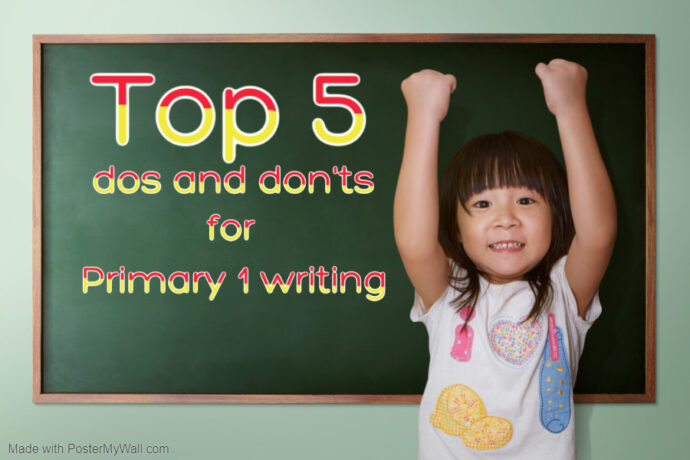
How to prepare for Primary 1 picture composition
When it comes to Primary 1 picture composition, it is common that most Primary 1 pupils find it challenging to write an entire story by themselves.
To better prepare your child for Primary 1 picture composition, here are the top 5 things to take note of which can help to make picture composition an easier task for your child.
1) DO Learn the right grammar
Composition writing from Primary 1 to the Primary 6 level requires the use of past tense.
Before your child can start on composition writing proper, he will need to learn the past tense form of verbs. Besides the past tense form, the past continuous form is equally useful in Primary 1 writing.
Example of a sentence
Pete was picking (past continuous) up his ball when he heard (past tense) a loud honk.
2) DO learn vocabulary words, not phrases
The focus should be on adjectives which can be used to describe feelings and verbs which can be used to describe actions.
Example of a sentence with an adjective
Jim was horrified when there was a blackout.
Example of a sentence with a verb
The pupils dashed to the canteen.
It is common that Primary 1 pupils make spelling mistakes when writing. Although it is essential to learn new vocabulary words, the learning should also be pegged at their level.
At the Primary 1 level, the learning is recommended to focus on specific words first as the learning of phrases can be rather challenging for a number of Primary 1 pupils.
3) DO start with sentence writing.
Before learning to write an entire story, it is ideal to start Primary 1 pupils on the writing of sentences first. In this way, pupils get targeted practice on punctuation, capitalisation and spelling as they write sentences.
At the start of Primary 1, the focus should be on mastering simple sentences.
Example 1 of a simple sentence
Sara + picked up + a wallet.
(person) (action) (noun)
Example 2 of a simple sentence
Molly + ran to + the bus stop.
(person) (action) (place)
The mastery of sentence writing will make it easier for your child to write a complete story which is made up of a number of sentences.
4) DO write shorter sentences
Primary 1 pupils tend to make grammatical errors when writing sentences that are too long for them to manage.
Sentences that have three parts or more joined together can be considered as too long for Primary 1 pupils.
Example of a sentence that is too long
[[Tom did his homework]] as [[his mother cooked dinner]] and [[his grandfather watched television]].
When writing sentences, two-part sentences with one conjunction are suitable for most Primary 1 pupils.
Example 1
Tom did his homework as (conjunction) his mother cooked dinner.
Example 2
Ravi went to Sara’s house but (conjunction) she was not at home.
5) DO not start with the writing of speech
At Primary 1, most pupils are still learning to perfect their use of punctuation. This means it is common for Primary 1 pupils to make mistakes when using punctuation for normal sentences.
The writing of speech / dialogue requires precise and more complex use of punctuation which can be challenging for Primary 1 pupils to master.
Generally, the instruction of writing speech is best attempted only at the end of Primary 1 when pupils have had more practice in writing.
Learning how to plan a story is the next step for Primary 1 pupils. Do read our post on SPACE story planning for Primary 1 composition.
Our Primary 1 English writing class adopts our teaching strategy which is entirely tailored to the needs and abilities of Primary 1 pupils. Enrol your child in our Primary 1 English writing class today.



